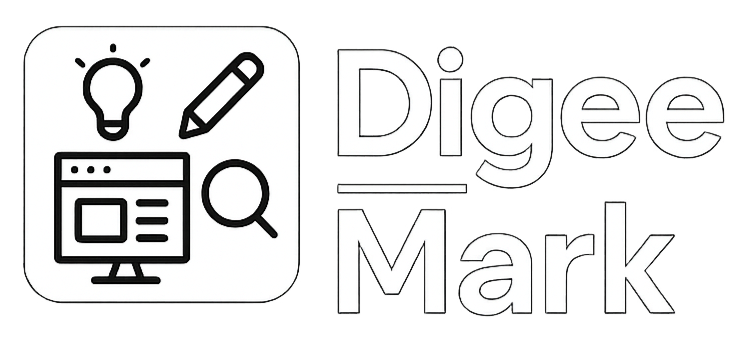The Importance of Interaction Design in Modern Websites Introduction In today’s digital-first world, a website isn’t just a digital brochure—it’s a full-fledged experience. While visuals and layouts play an important role, the real magic lies in how users interact with your site. That’s where interaction design in websites comes in. It focuses on creating intuitive, user-friendly, and engaging experiences that keep visitors coming back. For businesses, interaction design directly impacts engagement, conversions, and brand credibility. What Is Interaction Design? Interaction design (IxD) is the process of designing interactive elements on a website to make the user journey smooth and engaging. It considers how users navigate, click, scroll, and respond to different features. Key Elements of Interaction Design Buttons & CTAs – Encouraging users to take action. Animations & Transitions – Making interactions visually appealing. Navigation Systems – Guiding users seamlessly through the site. Feedback Responses – Confirming user actions with visual or audio cues. Why Interaction Design Matters in Websites 1. Enhances Usability Good interaction design ensures that users can find what they need quickly. From intuitive menus to responsive buttons, usability makes a website effortless to use. 2. Boosts User Engagement Interactive elements like sliders, hover effects, and animations keep users engaged, reducing bounce rates. 3. Builds Brand Trust A smooth and professional user experience reflects positively on your brand. If users find your site easy to navigate, they’re more likely to trust your business. 4. Drives Conversions Well-placed CTAs, micro-interactions, and feedback loops guide users toward completing desired actions—whether that’s filling out a form, signing up, or making a purchase. The Role of Interaction Design in User Experience (UX) Interaction design is a critical part of UX design. While UX covers the overall journey, IxD ensures that every step of that journey feels intuitive and engaging. UX Example: Ensuring a shopping cart works smoothly. IxD Example: Designing an animation that shows items being added to the cart, giving instant feedback to the user. Together, they create experiences that are both functional and delightful. Conclusion The importance of interaction design in websites cannot be overstated. In an era where digital experiences shape customer perceptions, well-designed interactions are key to capturing attention, building trust, and driving conversions. At Digeemark.xyz, we specialize in crafting websites that go beyond aesthetics. Our team focuses on interaction design, UI/UX, and performance to deliver websites that truly engage and convert. 👉 Want to give your customers a seamless online journey? Let us help you design an interactive website that stands out.
The Future of Digital Solutions: Trends Businesses Can’t Ignore
The Future of Digital Solutions: Trends Businesses Can’t Ignore Introduction The business landscape is evolving at lightning speed. Customers are more digital-savvy, competition is fierce, and technology is advancing faster than ever. To thrive, companies must not only keep up but also anticipate what’s next. That’s why understanding the future of digital solutions is crucial for any business aiming to stay competitive. From artificial intelligence to immersive experiences, tomorrow’s digital solutions will reshape how businesses attract, engage, and retain customers. In this article, we’ll explore the top digital trends businesses can’t afford to ignore in the coming years. 1. AI-Powered Business Solutions Artificial intelligence (AI) is no longer a futuristic concept—it’s here, and it’s transforming industries. How AI Impacts Businesses Personalization: AI-driven tools help tailor content, products, and services to customer preferences. Automation: From chatbots to automated workflows, AI reduces manual tasks and boosts efficiency. Data Insights: Predictive analytics help companies make smarter decisions based on customer behavior. Businesses that adopt AI early will gain a competitive advantage in speed, accuracy, and personalization. 2. The Rise of Automation and Smart Workflows Automation goes beyond AI—it covers all tools and technologies that streamline repetitive processes. Examples of Automation in Action Automated email marketing campaigns. Workflow tools that connect multiple platforms (CRM, sales, social). Chatbots providing 24/7 customer support. For businesses, automation means lower costs, fewer errors, and more time to focus on strategy and innovation. 3. Cloud-Based Digital Solutions Cloud computing is no longer just about storage—it’s the backbone of digital transformation. Why Cloud Matters for the Future Scalability: Businesses can grow without worrying about IT infrastructure. Collaboration: Teams can work remotely with ease. Cost Efficiency: Pay-as-you-go models save money for startups and enterprises alike. From cloud-based CRMs to project management tools, companies must embrace the cloud to remain agile. 4. Personalized User Experiences (UX & UI) Customers expect more than just a functional website—they want an experience. Future UX/UI Trends Voice-enabled navigation. Minimalist, mobile-first interfaces. Micro-interactions that make browsing enjoyable. The future of digital solutions lies in designing experiences that are smooth, intuitive, and engaging. Businesses that ignore this will risk losing customers to competitors offering better user journeys. 5. Immersive Technologies: AR & VR Augmented Reality (AR) and Virtual Reality (VR) are revolutionizing industries from retail to education. Use Cases Businesses Can Leverage Retail: Virtual try-ons for clothes, glasses, or furniture. Real Estate: Virtual property tours. Training: Simulated learning environments for employees. AR and VR provide immersive, engaging experiences that enhance customer trust and decision-making. 6. Data Security and Privacy Solutions With digital transformation comes an increased responsibility for data protection. Key Trends in Security Stronger encryption and cybersecurity frameworks. Transparent data privacy policies. Compliance with global standards like GDPR. Businesses must prioritize digital security to protect customer trust and brand reputation. 7. The Growing Importance of SEO and Content Search engine algorithms are constantly evolving, but one thing remains true: content and SEO are critical. Future SEO Trends AI-driven content creation and optimization. Voice search optimization. Semantic SEO focusing on search intent. For businesses, investing in SEO ensures long-term visibility and organic traffic growth. 8. Digital Collaboration Tools for Hybrid Work Hybrid work is here to stay, and businesses need digital solutions that support flexibility. Examples Video conferencing platforms with AI features. Cloud-based project management software. Digital whiteboards for real-time brainstorming. The future belongs to companies that adopt tools enhancing collaboration across remote and in-office teams. 9. Sustainable Digital Practices Customers are increasingly drawn to brands that value sustainability. Digital Sustainability Solutions Eco-friendly web hosting. Optimized digital infrastructure reducing energy usage. Paperless workflows powered by cloud solutions. Sustainability is no longer a choice—it’s a business necessity. Conclusion The future of digital solutions is shaping businesses in ways we couldn’t have imagined a decade ago. From AI to immersive tech, from SEO to sustainable practices, these innovations are creating new opportunities for companies to grow and connect with their customers. At Digeemark.xyz, we specialize in building future-ready digital solutions—covering web development, SEO optimization, UI/UX design, and interaction design—that help businesses stay ahead in an ever-changing digital world. 👉 The future is digital. Is your business ready? Let’s build it together.
Top 10 SEO Optimizing Strategies Every Business Needs in 2025
Top 10 SEO Optimizing Strategies Every Business Needs in 2025 Introduction: Why SEO Optimizing Strategies Still Matter in 2025 Search Engine Optimization (SEO) has always been the backbone of digital success. In 2025, competition online is fiercer than ever, with businesses of all sizes battling for visibility. That’s why having SEO optimizing strategies in place isn’t just optional—it’s essential. Whether you run a small startup or a large enterprise, effective SEO helps you rank higher, attract qualified traffic, and build long-term credibility with your audience. The Evolution of SEO: From Keywords to AI SEO is no longer just about stuffing keywords into a webpage. Today, Google uses AI algorithms, semantic search, and user intent analysis to rank content. Factors like page speed, mobile usability, and E-E-A-T (Experience, Expertise, Authoritativeness, and Trustworthiness) are critical in determining visibility. Businesses that adapt to these changes and invest in modern strategies will thrive. Strategy 1: AI-Driven Keyword Research Artificial Intelligence is transforming keyword research. Instead of guessing what your audience searches for, AI tools like SEMrush, Ahrefs, and Google Keyword Planner provide data-driven insights. Tools for Smarter Keyword Targeting AnswerThePublic for long-tail queries. Google Trends for emerging topics. ChatGPT-powered tools for understanding search intent. 👉 Businesses that leverage AI for keyword targeting see higher ROI and better traffic conversion. Strategy 2: Voice Search Optimization With smart speakers and voice assistants like Siri and Alexa on the rise, voice search is becoming a key driver of traffic. Adapting Content for Conversational Queries Optimize for natural, question-based phrases. Use structured data (schema markup) for rich snippets. Focus on local SEO since many voice searches are location-based. Strategy 3: Mobile-First and Responsive Web Design Google ranks mobile-friendly sites higher. With over 70% of web traffic coming from mobile, responsive design is a must. Core Web Vitals and User Experience Fast loading speed (under 3 seconds). Easy navigation with minimal pop-ups. Engaging UX that keeps users browsing longer. Strategy 4: High-Quality Content Creation Content is still king in 2025, but only if it’s original, relevant, and valuable. Content Depth, Originality, and Relevance Long-form blogs (2000+ words) for authority. Unique insights backed by real data. Visual content like infographics, videos, and case studies. Strategy 5: On-Page SEO Best Practices On-page SEO is the foundation of search visibility. Meta Tags, Headers, and Internal Linking Optimize title tags and meta descriptions with keywords. Use H1–H6 headers for structure. Build internal links to improve navigation and crawlability. Strategy 6: Technical SEO and Site Speed No matter how good your content is, poor technical SEO can hurt rankings. Tools to Monitor and Improve Performance Google PageSpeed Insights for speed checks. Screaming Frog SEO Spider for site audits. Cloudflare CDN for faster global delivery. Strategy 7: Local SEO for Small and Medium Businesses If you run a physical store or local service, local SEO is a game-changer. Google Business Profile & Local Citations Claim and optimize your Google Business Profile. Ensure NAP (Name, Address, Phone) consistency. Collect positive customer reviews for trust. Strategy 8: Video SEO and Multimedia Optimization Videos are dominating online traffic, and Google prioritizes rich media content. Leveraging YouTube and Embedded Video Content Optimize video titles and descriptions with keywords. Add transcripts for accessibility. Embed videos in blogs for increased dwell time. Strategy 9: Link Building with Authority Backlinks Backlinks remain one of the strongest ranking signals in SEO. Ethical Outreach and Partnerships Guest posting on industry-leading sites. Collaborating with influencers and thought leaders. Creating shareable content like research reports. Strategy 10: Data-Driven SEO with Analytics & AI Tools What you can’t measure, you can’t improve. Using Insights for Continuous Improvement Track rankings with Google Search Console. Monitor conversions with Google Analytics 4. Use AI dashboards to predict user behavior and adapt strategies.



